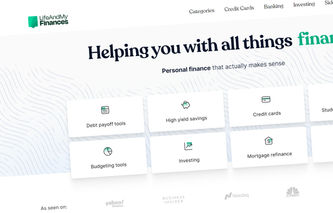| Name | Score | Visit | Annual Fee | Regular APR | Intro Offer | Credit Needed | Disclaimer | |
|---|---|---|---|---|---|---|---|---|
 | 9.6 | Visitcapitalone.com | $39 | 30.74% (Variable) | N/A | Fair (580–689) | ||
.svg) | 7.0 | Visitcapitalone.com | $0 | 30.74% (Variable) | N/A | Fair (580–689) | ||
 | 6.0 | Visitindigocard.com | $75 | 24.9 | N/A | Bad (300–629) | ||
 | 5.6 | Visitfitcardinfo.com | $99 annually. One-time initial $89 fee. Additional annual maintenance fee of $75. | 29.9% | N/A | Bad (300-629) | ||
 | 6.8 | Visitmilestonegoldcard.com | $35 - 99 | 24.90% | N/A | Qualify with bad credit | ||
.svg) | 6.4 | Visitcreditonebank.com | $75 | 28.49% | N/A | ad (300–629) | ||
 | 6.0 | Visitdestinycard.com | See terms* | See Terms* | N/A | Bad (300–629) | ||
 | 5.6 | Visitsurgecardinfo.com | $75-$125 | 29.99% | N/A | Bad (300-629) | ||
 | 5.6 | Visitreflexcardinfo.com | $75-$125 | 29.99% | N/A | Bad (300-629) | ||
 | 7.4 | Visitbuyontrust.info | $50 one-time fee to start. $10 to close each account | N/A | N/A | Bad (300–629) | ||
 | 8.4 | Visituniquecardservices.com | $239.4 | N/A | N/A | Bad (300–629) |
Summary
Capital One QuicksilverOne: For rebuilding credit
Capital One Platinum card: For rebuilding credit
Indigo® Mastercard®: Best for easy approval
FIT Mastercard®: Best for 400 credit score
Milestone® Mastercard®: For 500 credit score
Credit One Bank® Platinum Visa® for Rebuilding Credit: For 500 credit score
Destiny Mastercard®–$700 Credit Limit: For 500 credit score
Surge® Mastercard®: For $500 limit for bad credit
Reflex® Platinum Mastercard®: For $500 limit for bad credit
Buy On Trust: Retail credit card
Unique Platinum: Retail credit card
Second Chance Credit Cards With No Security Deposit or Checking Accounts
"Can I get a credit card without paying a deposit?"
Absolutely.
"Ok, so which credit cards do not require a desposit?"
We found nearly a dozen great options.
See below for the best second chance credit cards without a deposit. Continue down the page for more detail on each one:
Capital One QuicksilverOne: For rebuilding credit
Capital One Platinum card: For rebuilding credit
Indigo® Mastercard®: Best for easy approval
FIT Mastercard®: Best for 400 credit score
Milestone® Mastercard®: For 500 credit score
Credit One Bank® Platinum Visa® for Rebuilding Credit: For 500 credit score
Destiny Mastercard®–$700 Credit Limit: For 500 credit score
Surge® Mastercard®: For $500 limit for bad credit
Reflex® Platinum Mastercard®: For $500 limit for bad credit
Buy On Trust: Retail credit card
Unique Platinum: Retail credit card
Rebuilding credit cards with no deposit—Capital One QuicksilverOne and Capital One Platinum
Rebuilding credit
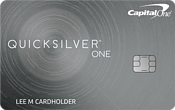
Capital One QuicksilverOne
3.6
Annual Fee
$39
Reward rate
1.5%–5%
Intro offer
N/A
1.5% cash back on every purchase, every day. Earn 5% cash back on hotels and rental cars booked through the Capital One portal.
141 people chose this
Learn more
Account Basics
DETAIL | METRIC |
Regular APR | 29.99% |
Intro APR | N/A |
Balance transfer rate | 0% |
Balance transfer intro APR | N/A |
Cash advance APR | 29.9% (Variable) |
Fees/Restrictions
TYPE | DESCRIPTION |
Annual fees | $39 |
Balance transfer fees | None for balances transferred at the transfer APR |
Cash advance fees | $3 or 3% (whichever is higher) |
Foreign transaction fees | None |
Late payment fees | Up to $40 |
Why we picked it
Capital One is a top name in credit cards.
While the Capital One QuicksilverOne card can be tougher to get (since it’s catered more toward those with average credit), it might be worth a shot considering all the positives.
If you’re looking at credit cards for a 580 credit score with no deposit, try to get approved for this one. It’s a fantastic card for below-average credit.
- 1.5% cash back on every purchase, every day.
- 5% cash back on hotels and rental cars booked through Capital One Travel.
- No foreign transaction fees
- $39 annual fee
- High APR of 29.99% for those with lower credit scores.
Rebuilding credit
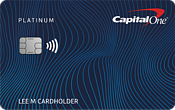
Capital One Platinum
3.5
Annual Fee
$0
Reward rate
N/A
Intro offer
N/A
107 people chose this
Learn more
Account Basics
DETAIL | METRIC |
Regular APR | 29.99% |
Intro APR | N/A |
Balance transfer rate | 0% |
Balance transfer intro APR | N/A |
Cash advance APR | 29.9% (Variable) |
Fees/Restrictions
FEES | DESCRIPTION |
Annual fees | $0 |
Balance transfer fees | None for balances transferred at the transfer APR |
Cash advance fees | $3 or 3% (whichever is higher) |
Foreign transaction fees | None |
Late payment fees | Up to $40 |
Why we picked it
If you’re looking for a Capital One second chance credit card, the Capital One Platinum Mastercard® is their version of that.
It has a $0 annual fee and no foreign transaction fees. Not too many frills in this card, but it’s a great brand with excellent protection.
- No annual fee
- Accepted almost anywhere
- There are no rewards with this card.
- High APR of 29.99%.
Easy approval credit cards with no deposit—Indigo® Mastercard®
Easy approval

Indigo® Mastercard®
3
Annual Fee
$75
Reward rate
N/A
Intro offer
N/A
42 people chose this
Account Basics
DETAIL | METRIC |
Regular APR | 24.9% |
Intro APR | N/A |
Balance transfer rate | N/A |
Balance transfer intro APR | N/A |
Cash advance APR | 29.9% (Variable) |
Fees/Restrictions
TYPE | DESCRIPTION |
Annual fees | $99 |
Balance transfer fees | N/A |
Cash advance fees | None in the 1st year, then either $5 or 5% thereafter (whichever is higher) |
Foreign transaction fees | 1% |
Late payment fees | Up to $40 |
Why we picked it
What is the easiest unsecured card to get? We gave this prize to Indigo®.
We ranked Indigo® as the easiest credit card to get with no deposit because they not only accept applicants with poor or bad credit, they even advertise it on their website:
“You shouldn’t have to put your plans on the backburner just because you have a challenging credit history. With Indigo Mastercard you can build credit while you go where you want, when you want.”
It’s nearly a guaranteed approval.
Indigo is an unsecured card. They have an easy pre-qualification process (that won’t impact your credit), and they report to the three major credit bureaus.
- The interest rate is reasonably low at 24.99%.
- A first-year fee of just $75.
- There’s no additional monthly maintenance fee.
- 1% foreign transaction fee.
- The annual fee increases to $99 after the first year.
- The maximum credit limit is low—just $300.
- Late payment, overdraft, and returned payment fees can be up to $40.
- There’s a 5% cash advance fee.
And, according to Indigo’s terms and conditions—
“To be prequalified and/or approved for an account, you must:
Meet our credit qualification criteria, including a review of your income and your debt, and identity verification requirements.
Not have an existing Indigo Mastercard Account.
Not have had an Indigo Mastercard Account that charged off due to delinquency.”
Credit cards for bad or poor credit: no deposit
Credit cards for a 400 credit score with no deposit—FIT Mastercard®
Best for 400 credit score
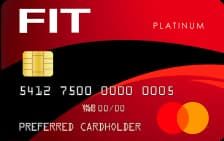
FIT Mastercard®
2.8
Annual Fee
$99
Reward rate
N/A
Intro offer
N/A
21 people chose this
Account Basics
DETAIL | METRIC |
Regular APR | 29.99% |
Intro APR | N/A |
Balance transfer rate | N/A |
Balance transfer intro APR | N/A |
Cash advance APR | 29.9% (Variable) |
Fees/Restrictions
TYPE | DESCRIPTION |
Annual fees | $99. Additional one-time $89 fee. Annual maintenance fee of $75. |
Balance transfer fees | N/A |
Cash advance fees | $10 or 3%, whichever is higher |
Foreign transaction fees | 3% |
Late payment fees | Up to $41 |
Why we picked it
The FIT Mastercard® lets you build or reestablish your credit so you can qualify for better (cheaper) cards in the future.
It’s backed by Continental Finance—one of the most established credit card companies in America.
While it certainly isn’t the best second-chance credit card on the market, it’s one of the few unsecured options available for a credit score under 500.
- The application process takes just 60 seconds (basically instant approval), so you’ll know if you’re approved immediately.
- After six timely minimum payments, you can double your credit limit.
- There’s a one-time program fee of $89.
- After the first year, there’s a monthly fee in addition to the annual fee ($6.25).
- The APR is 29.99%.
- The initial available credit is roughly 75% of your credit limit (meaning you can’t spend your entire credit limit).
- Penalty fees of up to $41.
Read our full FIT Mastercard® review.
Credit cards for a 500 credit score with no deposit—Milestone® Mastercard®, Credit One Bank® Platinum Visa® for Rebuilding Credit, and Destiny Mastercard®–$700 Credit Limit
Best for 500 credit score
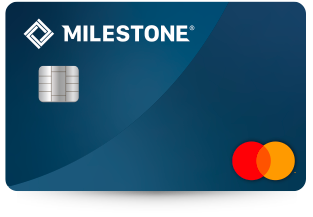
Milestone® Mastercard
3
Annual Fee
$35 –$75
Reward rate
N/A
Intro offer
N/A
20 people chose this
Account Basics
DETAIL | METRIC |
Regular APR | 24.9% |
Intro APR | N/A |
Balance transfer rate | N/A |
Balance transfer intro APR | N/A |
Cash advance APR | 29.9% (Variable) |
Fees/Restrictions
TYPE | DESCRIPTION |
Annual fees | $35–$75 for the first year, then $99 thereafter. |
Balance transfer fees | N/A |
Cash advance fees | $5 or 5%, whichever is higher (not to exceed $100) |
Foreign transaction fees | 1% |
Late payment fees | Up to $40 |
Why we picked it
If you’re looking for a second chance in the credit card world, the Milestone® Mastercard® is a decent option.
- The APR is 24.90%—one of the lowest rates for poor/bad credit applicants.
- The annual fee is between $35 and $75 in year one (depending on your credit rating)—then $99 a year after that.
- The foreign transaction fee is just 1%.
- The upper credit limit on this card is just $300.
- There may be an additional maintenance fee of $35 each year.
- The cash advance fee is 5%.
- Penalties on late payments, returned payments, or exceeding your limit is up to $40 per infraction.
Best for 500 credit score
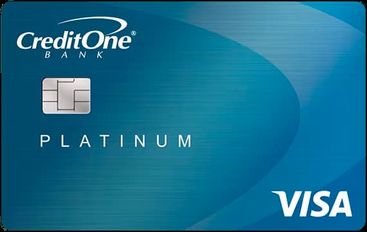
Credit One Bank® Platinum Visa® for Rebuilding Credit
3
Annual Fee
$75
Reward rate
1%
Intro offer
N/A
47 people chose this
Account Basics
DETAIL | METRIC |
Regular APR | 28.49% |
Intro APR | N/A |
Balance transfer rate | N/A |
Balance transfer intro APR | N/A |
Cash advance APR | 28.49% (Variable) |
Fees/Restrictions
TYPE | DESCRIPTION |
Annual fees | $75 for the first year, then $99 thereafter. |
Balance transfer fees | N/A |
Cash advance fees | $5 or 8% (whichever is higher) |
Foreign transaction fees | $1 or 3%, whichever is greater |
Late payment fees | Up to $39 |
Why we picked it
The Credit One Bank® Platinum Visa® was created specifically for those looking to rebuild their bad credit. And it’s one of the few rewards cards in the subprime market.
- Earn 1% cash back on eligible purchases.
- Minimum credit limit of $300, but upwards of $2,500.
- No additional maintenance fees.
- The APR is above average at 28.24%.
- The first year annual fee is $75 but then moves up to $99 a year after that.
- The 8% cash advance fee is high.
- There’s a 3% foreign transaction fee.
Best for 500 credit score
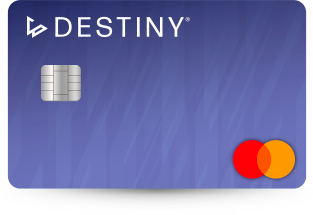
Destiny Mastercard®–$700 Credit Limit
3
Annual Fee
See Terms*
Reward rate
N/A
Intro offer
N/A
7 people chose this
Account Basics
DETAIL | METRIC |
Regular APR | See Terms* |
Intro APR | N/A |
Balance transfer rate | N/A |
Balance transfer intro APR | N/A |
Cash advance APR | See Terms* |
Fees/Restrictions
TYPE | DESCRIPTION |
Annual fees | See Terms* |
Balance transfer fees | N/A |
Cash advance fees | See Terms* |
Foreign transaction fees | 1% |
Late payment fees | See Terms* |
*Destiny terms and conditions.
Why we picked it
The Destiny Mastercard®—700 Credit Limit is an unsecured credit card that’s likely a good fit for people with bad to fair FICO scores.
They have a prequalification process that’s quick and easy—and they report to the three major credit bureaus (Experian, TransUnion, and Equifax).
- Fairly low APR for bad credit.
- Higher credit limit at $700.
- 1% foreign transaction fee.
- Cash advance fee.
- Penalty fees.
Check out our full Destiny Mastercard®—700 Credit Limit Review
$500 credit card for bad credit—Surge® Mastercard® and Reflex® Platinum Mastercard®
$500 limit for bad credit
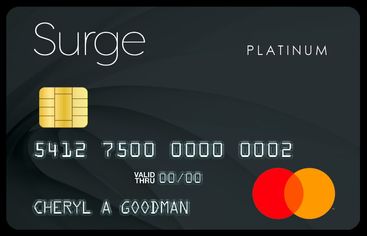
Surge® Mastercard
2.5
Annual Fee
$75–$99
Reward rate
N/A
Intro offer
N/A
19 people chose this
Account Basics
DETAIL | METRIC |
Regular APR | 29.99% APR (variable) |
Intro APR | N/A (see website for details) |
Balance transfer rate | N/A (see website for details) |
Balance transfer intro APR | N/A (see website for details) |
Cash advance APR | 29.99% (Variable) |
Fees/Restrictions
TYPE | DESCRIPTION |
Annual fees | $75–$99 first year, then $99 after that. Additional annual maintenance fee of up to $120. |
Balance transfer fees | N/A |
Cash advance fees | $10 or 3%, whichever is higher |
Foreign transaction fees | 3% |
Late payment fees | Up to $41 |
Why we picked it
The Surge® Mastercard® is backed by Continental Finance, one of America’s leading marketers and servicers of credit cards for consumers with less-than-perfect credit.
The initial credit limit ranges from $300 to $1,000. Make your first six monthly minimum payments on time and get your credit limit doubled.
- You get Mastercard’s zero liability protection.
- Monthly reporting to the three major credit bureaus.
- Free access to your Vantage 3.0 score from Experian (when you sign up for e-statements).
- The APR of 29.99% is pretty high.
- First-year annual fee of $75–$125, then between $99–$125 after that.
- The monthly maintenance fee is free for the first 12 months, but then could jump to $10 per month ($120 annually).
- 3% foreign transaction fee
$500 limit for bad credit
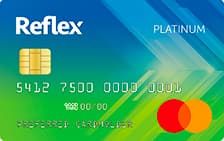
Reflex® Platinum Mastercard®
2.5
Annual Fee
$75–$125
Reward rate
N/A
Intro offer
N/A
13 people chose this
Account Basics
DETAIL | METRIC |
Regular APR | 29.99% APR (Variable) |
Intro APR | N/A |
Balance transfer rate | N/A |
Balance transfer intro APR | N/A |
Cash advance APR | 29.99% (Variable) |
Fees/Restrictions
TYPE | DESCRIPTION |
Annual fees | $75–$125 first year, then $99–$125 after that. Additional annual maintenance fee of up to $120. |
Balance transfer fees | N/A |
Cash advance fees | $10 or 3%, whichever is higher |
Foreign transaction fees | 3% |
Late payment fees | Up to $41 |
Why we picked it
The Reflex® Platinum Mastercard® is a near-carbon copy of the Surge card.
- Initial credit limit of $300–$1,000 (subject to available credit).
- Up to $1,000 credit limit doubles up to $2,000 (simply make your first 6 monthly payments on time)..
- It comes with all the protections and benefits of a Mastercard.
- And this card is even backed by the same company (Continental Finance)
- The APR of 29.99% is quite high.
- First year annual fee of $75–$125, then $99–$125 per year after that.
- The maintenance fee is free for the first year—but then may increase to $10 per month.
- No cash advances during the first 95 days an account is open.
Second chance retail credit cards—Buy On Trust and Unique Platinum
Best second chance retail credit card
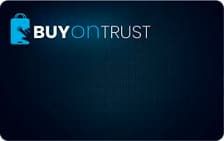
Buy On Trust
3.7
Annual Fee
$0
Reward rate
N/A
Intro offer
N/A
7 people chose this
Account Basics
DETAIL | METRIC |
Regular APR | N/A |
Intro APR | N/A |
Balance transfer rate | N/A |
Balance transfer intro APR | N/A |
Cash advance APR | N/A |
Fees/Restrictions
TYPE | DESCRIPTION |
Annual fees | $50 one-time fee to start. $10 to close each account. |
Balance transfer fees | N/A |
Cash advance fees | N/A |
Foreign transaction fees | N/A |
Late payment fees | N/A |
Why we picked it
Buy On Trust is a lease-to-own electronics store of mainly Best Buy products. The credit limit on their card is up to $5,000.
For this card, they won’t be pulling your credit to see if you qualify. Instead, they’ll check your bank account for at least $1,000 worth of income from the same source over three months. (They’ll also make sure you don’t have any overdrafts or insufficient fund pulls on your account.)
If you pass their review, you’ll get yourself a credit card that reports to the three major credit bureaus.
But leasing electronics obviously isn’t advice you’d get from your financial advisor (as this is the most expensive way to buy anything)—but if you’re hard-pressed to build your credit and don’t want a secured credit card, this is a unique way to do it.
- High credit limit
- No credit check
- Leasing is the most expensive way to buy anything
- Limited to Best Buy products
Best second chance retail credit card
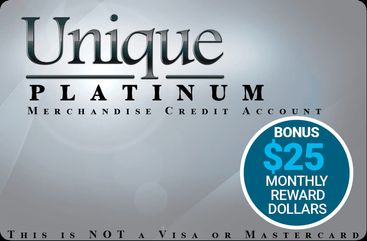
Unique Platinum
4.2
Annual Fee
$0
Reward rate
N/A
Intro offer
N/A
5 people chose this
Account Basics
DETAIL | METRIC |
Regular APR | N/A |
Intro APR | N/A |
Balance transfer rate | N/A |
Balance transfer intro APR | N/A |
Cash advance APR | N/A |
Fees/Restrictions
TYPE | DESCRIPTION |
Annual fees | $263.28 |
Balance transfer fees | N/A |
Cash advance fees | N/A |
Foreign transaction fees | N/A |
Late payment fees | N/A |
Why we picked it
Unique Platinum is an online merchandise credit card that can only be used at myuniqueoutlet.com—a seller of electronics, health and beauty, and home products.
The big plus here is that approval is easy (and instant since there are no credit, income, or employment checks).
Talk about second chance credit cards with guaranteed approval—this is it.
- Your card comes with a $1,000 credit limit.
- You can build credit since this card reports to TransUnion.
- 0% APR.
- The online store isn’t terrible, and it’s not a scam—but it’s also not going to wow you.
- To get started, there’s a $10 application fee.
- There’s a steep membership fee of $21.94 a month.
Second Chance Unsecured Credit Cards With No Deposit (But With a Checking Account)
So can you get a credit card without a security deposit? (You know, without having to fork out hundreds of dollars before you can even use it?). Yup! They're all the options you saw above.
I also posed the following question to all my fellow personal finance nerds out there:
What unsecured credit cards would you recommend to those with bad credit?
Shanté Nicole, CEO of Financial Common Sense, gave me the straight answer—
“None. [Unsecured credit cards for bad credit and no deposit] all come with fees, and if someone is going to pay fees, they may as well apply those funds to a secured card that will eventually graduate to unsecured.”
She’s right.
While I won’t recommend a list of secured credit cards in a post specifically about unsecured credit cards—
Let’s at least look at some impressive unsecured cards that require an extra element—a link to your bank account.
Tomo
Why we like it
The Tomo credit card is unlike any other card we’ve seen.
- 0% APR.
- No annual fee.
- 1% cash back on everything.
- There’s no credit check needed.
- You can use it anywhere Mastercard is accepted.
- And it reports to all three credit bureaus.
- Have bad credit? It doesn’t matter. You can still qualify for this card.
- Need to link to your bank account
- Need to pay off your balance in full each month
To get a Tomo credit card, you’ll need to first link to your bank accounts so they can give you an appropriate credit limit based on your savings.
Another deviation from the typical credit card—you’ll need to pay off your balance in full every month (or every week if you sign up for the auto-pay feature). If you don’t, your account will be frozen until your balance is paid.
Chime
Why we like it
Technically speaking, Chime isn’t a secured credit card—but the concept is similar.
Instead of putting money into an account as collateral (like secured cards operate), the Chime card has you put money into a bank account (and you technically draw money from that account when you swipe your credit card).
The beautiful thing about this is it helps your credit score—each transaction gets reported to the three major credit bureaus.
- 0% APR.
- No annual fee.
- No credit check to qualify.
- Your credit limit is equal to the amount you have in your account. (Want a higher limit? You’ll need to add funds into your Chime checking account.)
- You need to deposit a minimum of $200 to use the Chime credit card.
How to Get Approved For a 2nd Chance Credit Card
So, what’s the best way to get approved for a 2nd chance credit card?
Nearly every card we’ve selected above has a pre-qualify option. It won’t hurt your credit, and you’ll likely know immediately if you qualify for the card.
If you’re not accepted for an unsecured card because of low credit or a major mark on your history, you may need to start with either the Tomo card or Chime card we highlighted above.
Benefits of Credit Cards for Bad Credit
The above list of 10+ second chance credit cards with no security deposits all share one benefit—
They report your spending to at least one major credit bureau (and most report to all three bureaus).
The benefit of credit cards for bad credit is that they’re made to help you build back your credit—so you can qualify for a house purchase, pay less in insurance, and rent a car with ease when you need it.
Keep your spending light, pay your bills on time—and you’ll start to see your credit score creep up again.
How Long Does It Take to Rebuild Credit?
Have a 400 credit score and want to build it back to a 700 credit score?
This will take you nearly two years to accomplish.
Want to go from a 500 credit score to 750? You could do this in just under a year and a half.
See the table below for our full list of time estimates for building back your credit to a certain level:
INITIAL CREDIT SCORE | AVERAGE TIME TO REACH 700 CREDIT SCORE | AVERAGE TIME TO REACH 750 CREDIT SCORE | AVERAGE TIME TO REACH 800 CREDIT SCORE | AVERAGE TIME TO REACH 850 CREDIT SCORE |
New to credit | 6–8 months | 8 months to 1 year | 1–1.5 years | 1.5+ years |
300 | 2 years | 2–3 years | 3–4 years | 4+ years |
350 | 1.8–2 years | 2–2.5 years | 2.5–3.5 years | 3.5+ years |
400 | 1.5–1.8 years | 1.8–2 years | 2–3 years | 3+ years |
450 | 1.2–1.5 years | 1.5–1.8 years | 1.8–2 years | 2+ years |
500 | 1–1.3 years | 1.3–1.5 years | 1.5–1.8 years | 1.8+ years |
550 | 1 year | 1–1.3 years | 1.3–1.5 years | 1.5+ years |
600 | 8 months | 1 year | 1–1.3 years | 1.3+ years |
650 | 6–8 months | 8 months to 1 year | 1–1.2 years | 1.2+ years |
700 | – | 3–6 months | 6–9 months | 9 months to 1.2 years |
750 | – | – | 3–6 months | 6–9 months |
While the table above is super helpful to most, keep in mind there are other factors at play that could impact your timeframe. If you’ve had a bankruptcy or a foreclosure, your timetable could be longer.
(Want more information about building credit? Check out our recent post, “How Long Does It Take to Build Your Credit?”)
Next Steps After You Rebuild Your Credit
You’ve got a bad credit score now.
Let’s say you’re on track to build it back up over the next couple of years.
That’s exciting, but—
Here’s how you can make sure you keep it up and avoid tumbling back down into credit score hell again.
To keep your credit score high:
Keep your credit spending low. Always be sure you can afford something before you buy it on credit.
Never co-sign for anyone. If they don’t pay, it kills your credit. And no matter how powerful you think you are, you can’t control anyone other than yourself.
Pay down or pay off your debts using the debt snowball spreadsheet. (FYI, I’ve been completely debt free for over seven years now. I use my credit cards and pay them in full every month. My credit score is still 800.)
Expect the unexpected. Emergencies will happen. Medical bills, job loss, home repairs—these can all cost you $10,000 in an instant. Instead of becoming demoralized and plummeting further into debt, think ahead. Stash money away for these instances. Do not depend on a credit card to cover them.
Your credit score might not be the best right now—but your financial life could look vastly different just two years from now.
Find your favorite card from our list of low credit score credit cards with no deposit (above).
Go through the pre-approval process.
Get your new card and curb your initial enthusiasm. Spend lightly.
Then be sure to pay off your new credit card in full each month.
At the same time, it likely makes sense to pay down your other debts to improve your FICO score.
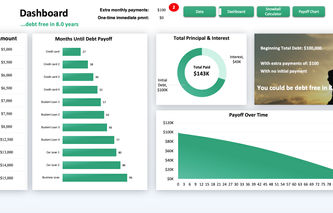
.jpg)
